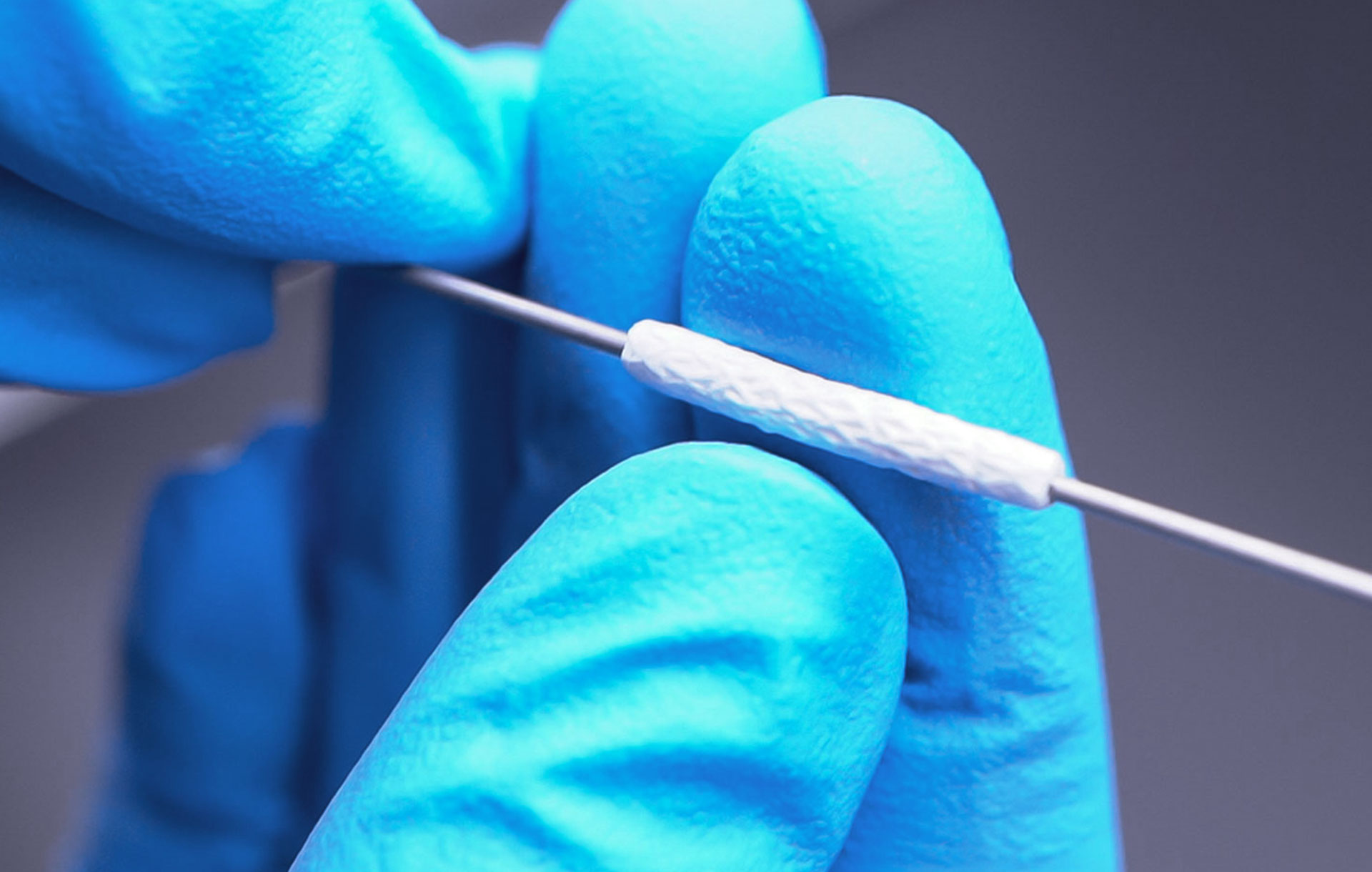Introduction
Medical devices are crucial in improving the quality of life of patients. Unfortunately, many medical devices are prone to failure for a variety of reasons such as immune rejection, mechanical failure, biofouling, and thrombosis [1,2]. For example, many vascular stents will fail over time due to restenosis and thrombosis. Stents coated with electrospun nanofibers have been demonstrated to restrict thrombosis, restenosis, and the buildup of plaques [3]. Next-generation medical devices can be designed with electrospun nanofibrous coatings to address some of the causes of device failure.
Vascular diseases:
Coronary artery disease (CAD) is among the top 10 causes of death worldwide [2]. During CAD, the coronary arteries become narrowed or blocked due to the buildup of plaque. Often, to restore proper blood flow, vascular stents are inserted into the clogged artery to relieve the block and resume blood flow. However, many stents fail over time leading to thrombosis and restenosis. This requires secondary intervention to prevent the disease from worsening [3]. It is thus critical to design stents that prevent this occurrence and improve the efficacy and longevity of vascular stents.
Electrospinning is a useful technology that can deposit a nanofibrous coating over a vascular stent. The innate nanofibrous structure produces nanoscale pores that can be used to restrict plaque from reinvading the vascular structure [4]. Drug-eluding stents deliver active agents that inhibit cell growth to prevent in-stent restenosis. To improve the efficacy of these stents, the fiber diameter of the nanofiber coating can be tuned to control the drug elution rate that will further improve stent performance [4]. Furthermore, anti-thrombogenic agents can be incorporated into electrospun fibers that can further improve the efficacy of vascular stents.
Electrospinning Coatings for Vascular Stents:
Electrospinning is a diverse technique that can fabricate fibers that range in diameter from 100 nm to 5 µm, using a variety of natural or synthetic polymers. During the electrospinning process, a polymer solution is charged to high voltages and propelled towards a grounded or negatively charged collector. As the polymer moves towards the collector, the solvents begin to evaporate, and the polymer gets collected in the form of nanofibers [5]. Traditional electrospinning designs use a flat plate collector (Figure 1A). However, a rotating mandrel can be used as a collector to coat various sized vascular stents that span from several centimeters in diameter down to the millimeter range (Figure 1B).
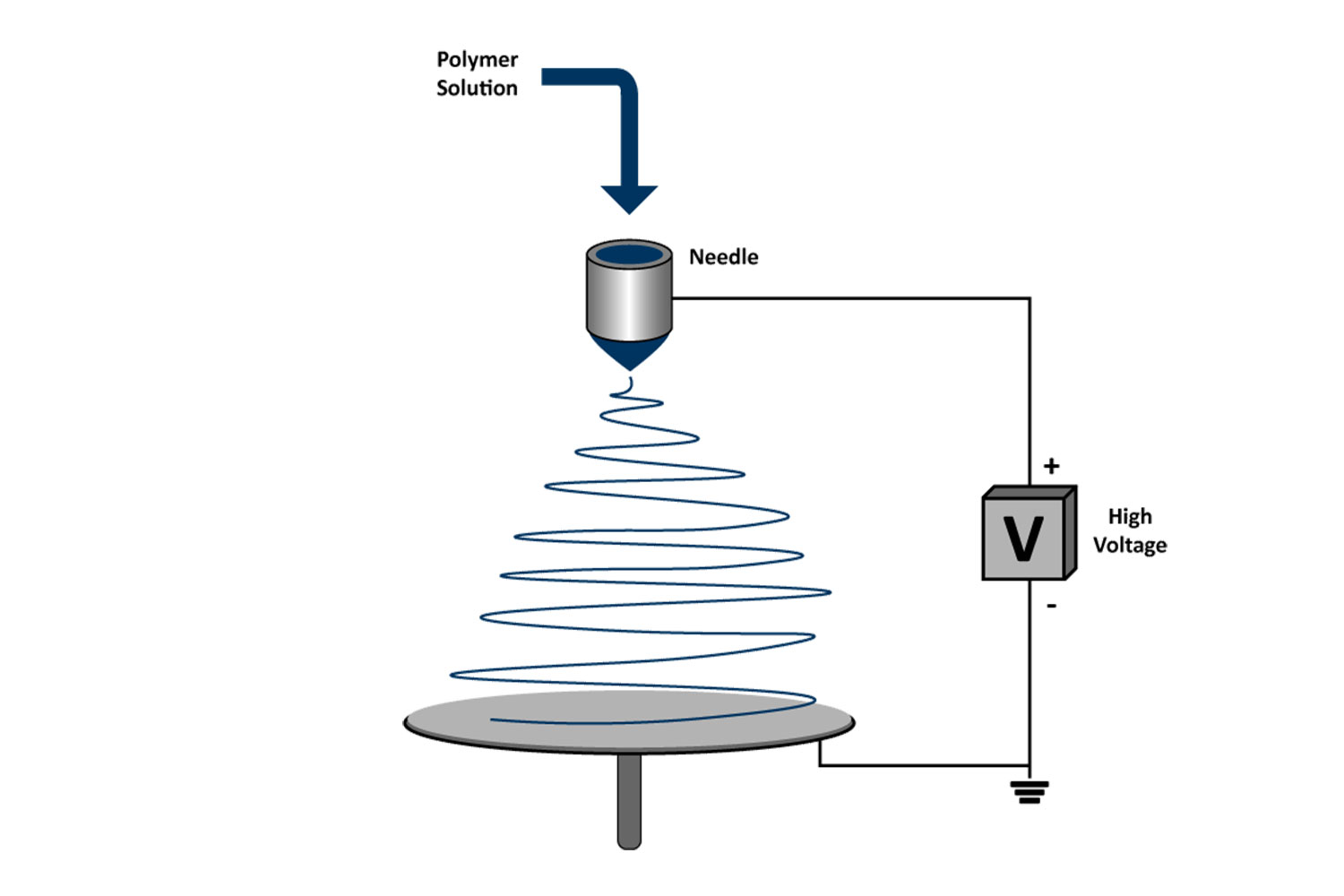
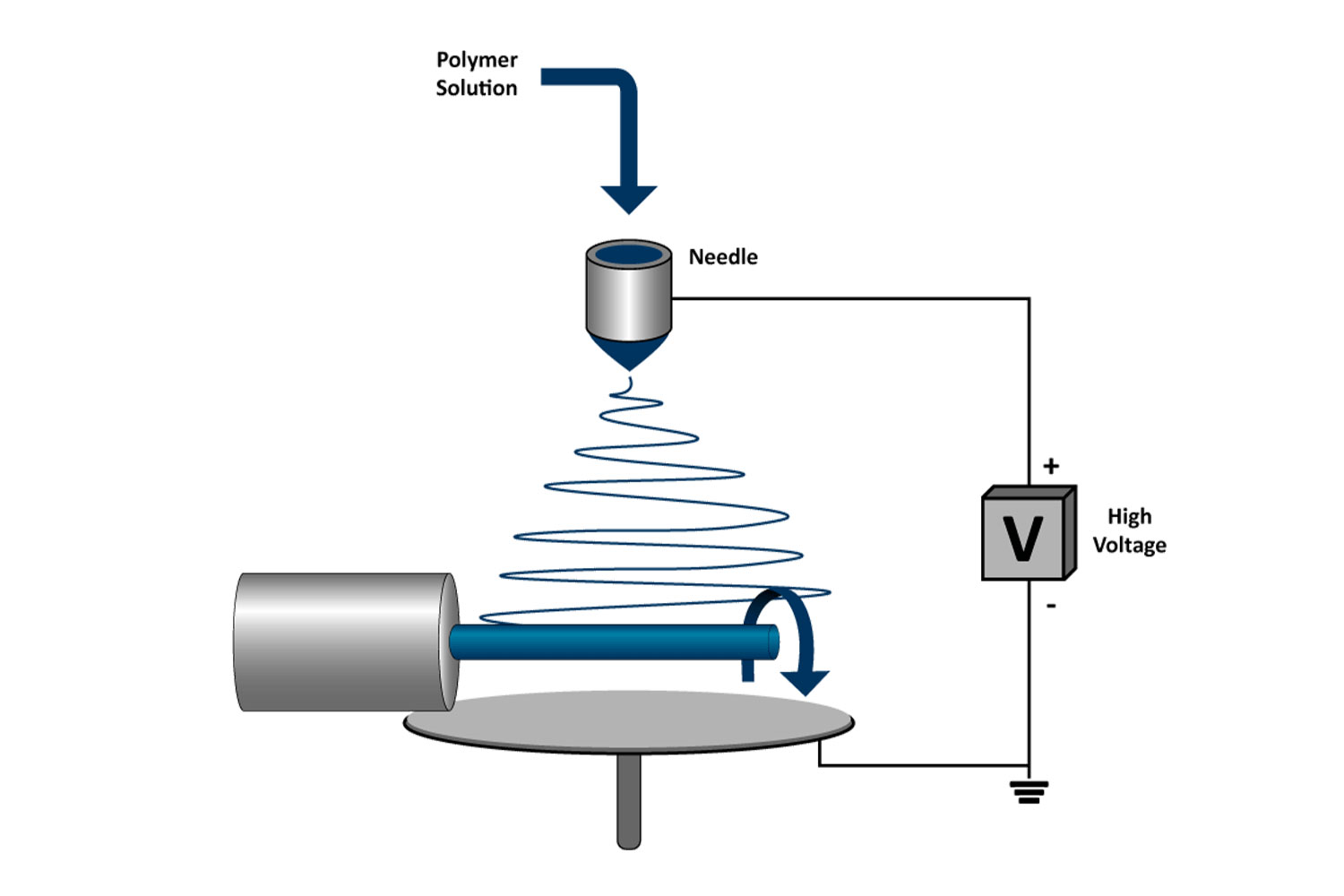
To coat a vascular stent, it is mounted on a mandrel collector of appropriate size (Figure 2A) and rotated to ensure that the electospun fibers are deposited evenly (Figure 2B & C). Smaller diameter stents can be coated using smaller mandrels. Electrospun fibers can be coated onto unique and complex stent designs using custom emitters and collectors in the electrospinning instruments.
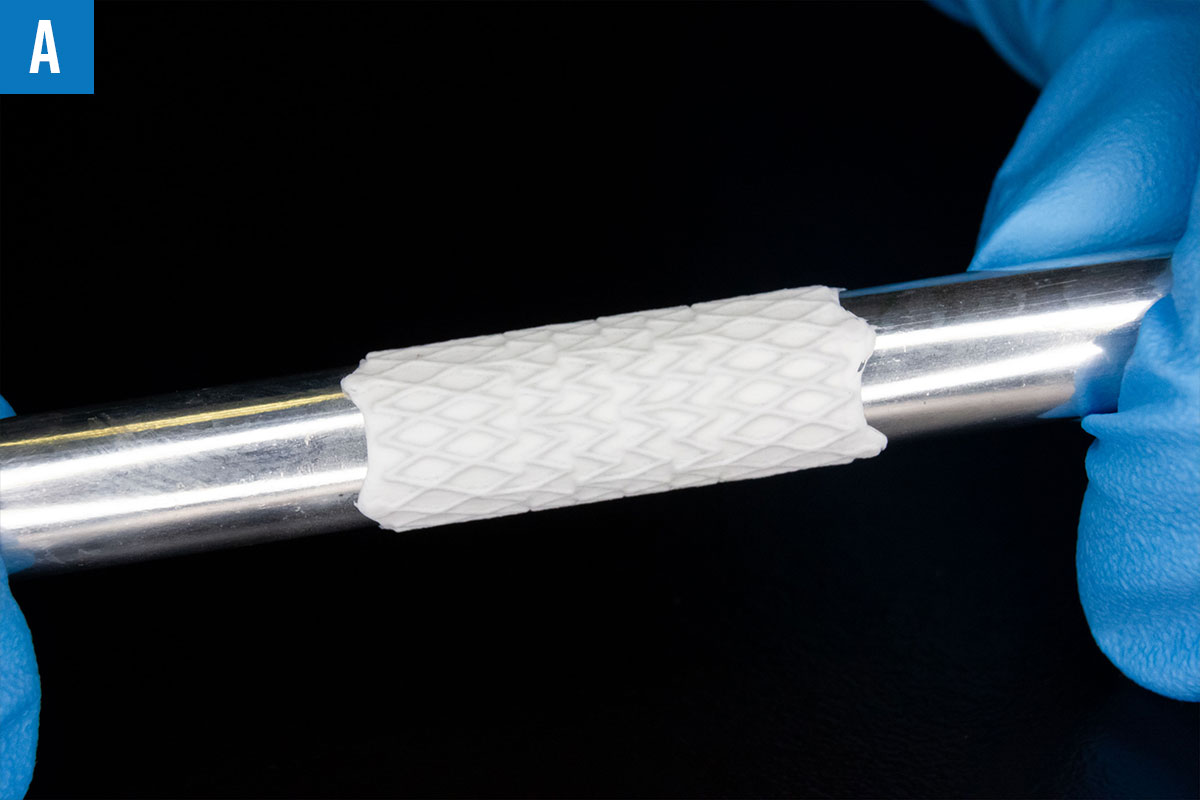
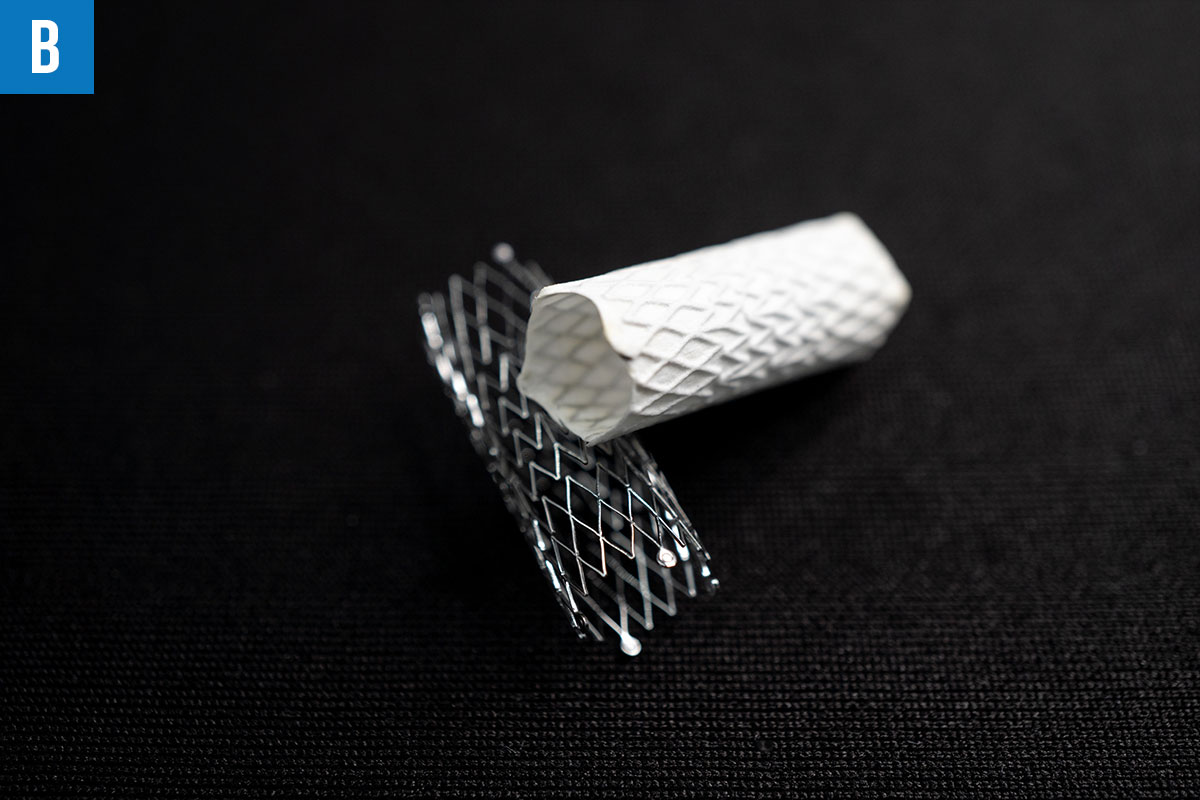
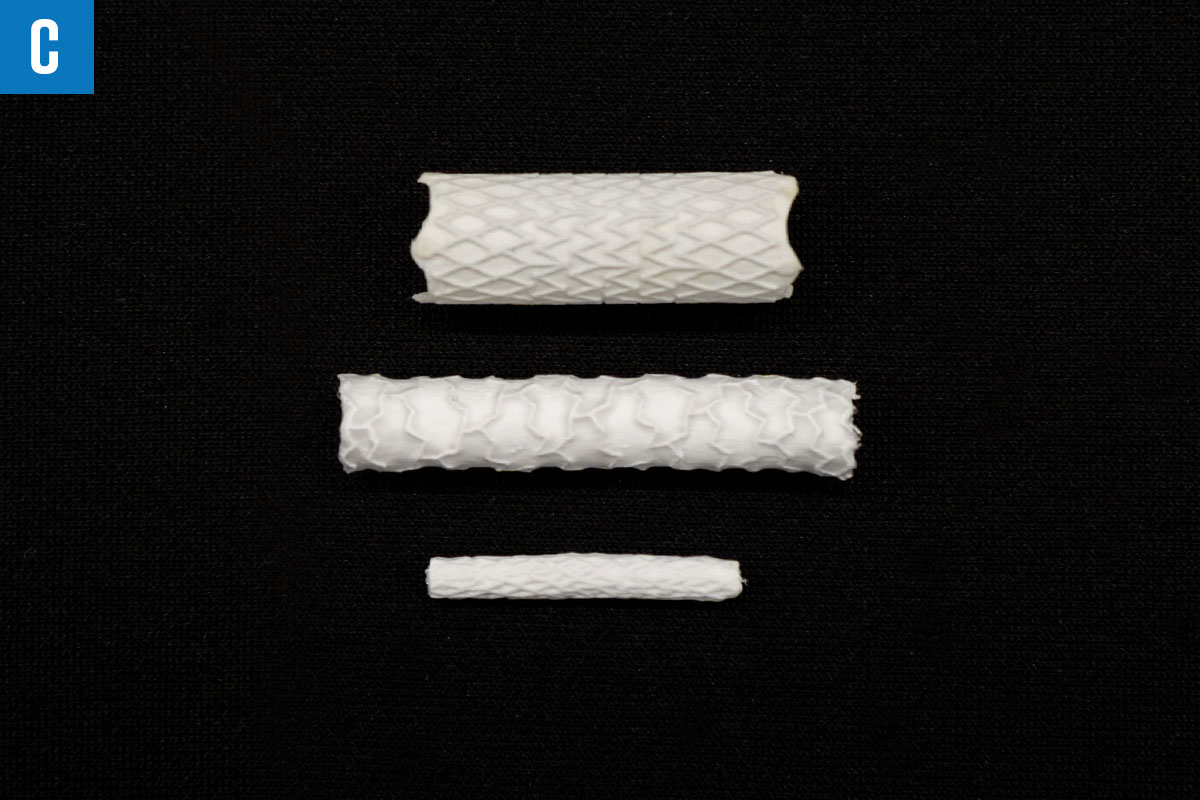
SEM imaging of the electrospun-coated vascular stent revealed a uniform layer of electrospun nanofibers that coated the surface of the metallic stent (Figure 3A). Higher-resolution images revealed that the fibers coating the metallic stent had a consistent and smooth morphology (Figure 3B).
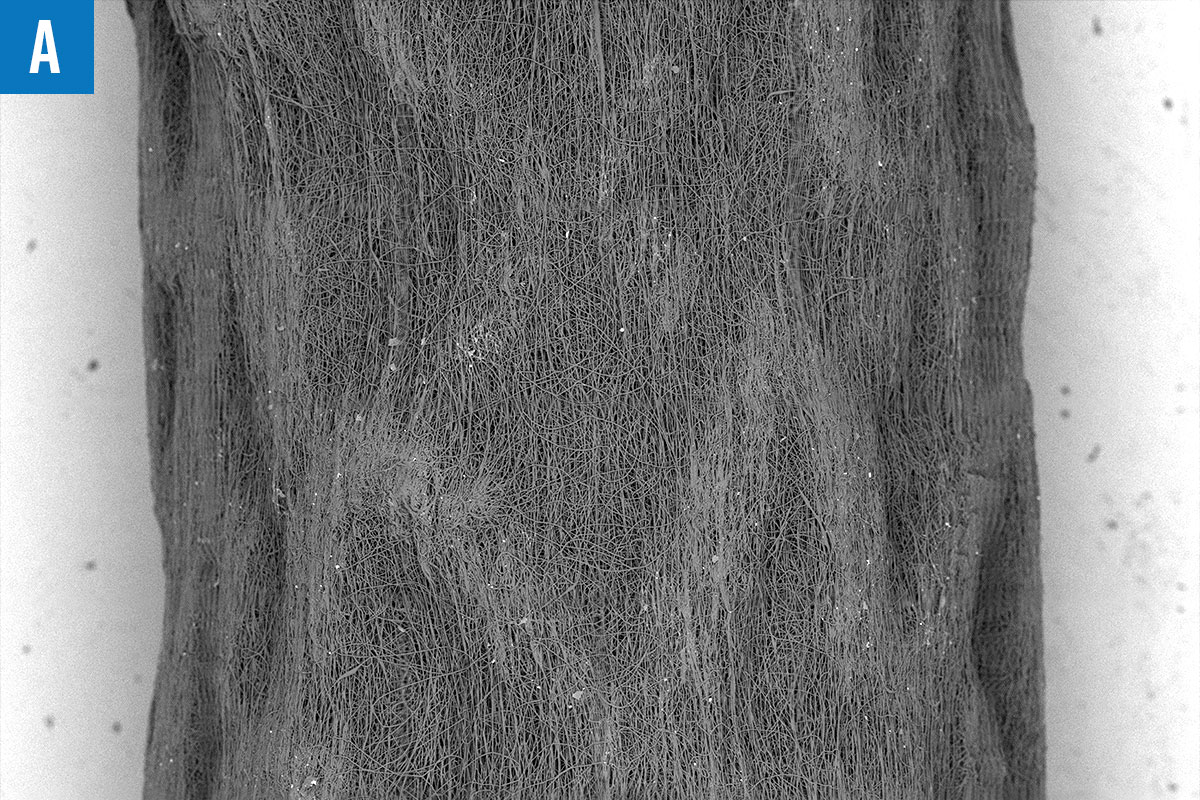
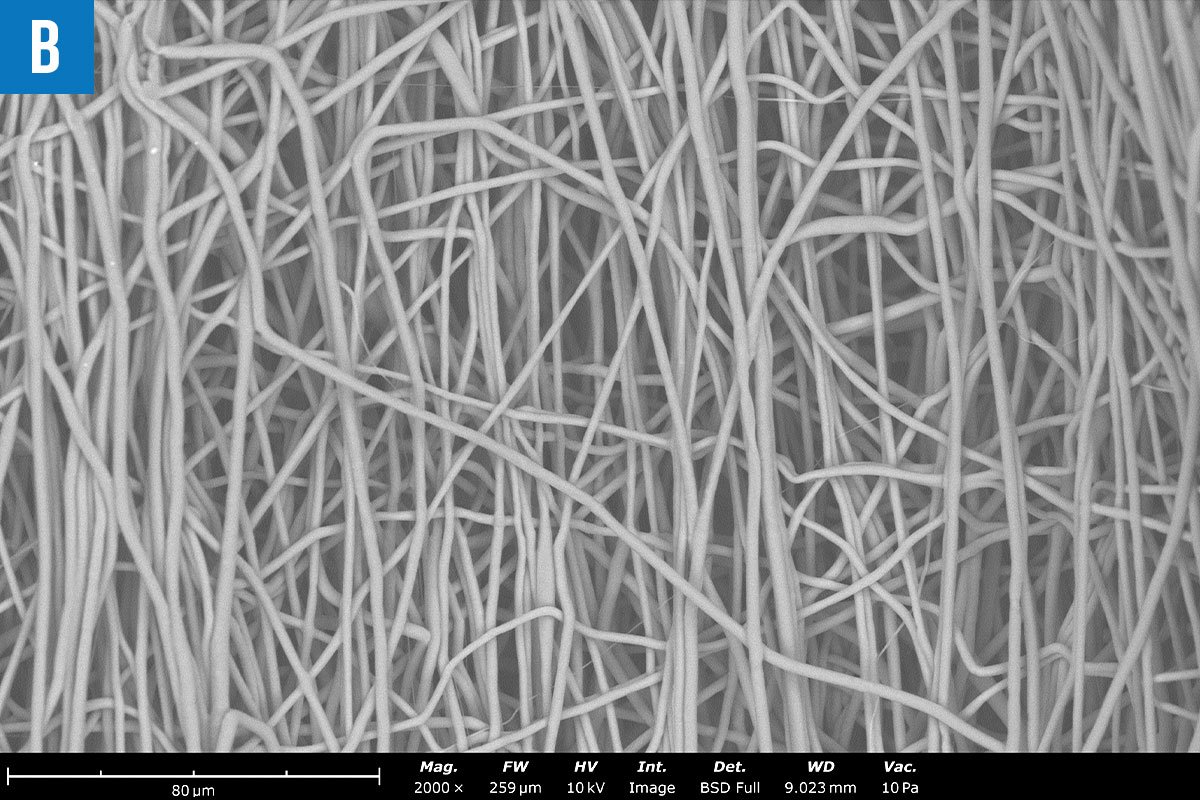
Conclusion
Medical devices have mixed success rates due to immune rejection, mechanical failure, biofouling, thrombosis, and others. Nanofibrous coating of medical devices can improve the overall device performance and longevity. Electrospun nanofibers were successfully coated over a vascular stent. The nanofibrous coating over the stent is known to restrict plaque buildup and prevent in-stent restenosis. Furthermore, the nanofibers can be designed for drug delivery that incorporates bioactive agents that can prevent immune response or have anti-thrombogenic factors. Electrospinning is a viable technology that can be used to design next generation of medical devices and improve the quality of life and longevity of injured or diseased patients.
References:
[1] Naranjo, B. M., Zollo, M., Sieber, S. A., & Lieleg, O. (2024). Lubricity, wear prevention, and anti-biofouling properties of macromolecular coatings for endotracheal tubes. Biomaterials Science, 12(5), 1228-1238.
[2] Im, S. H., Im, D. H., Park, S. J., Jung, Y., Kim, D. H., & Kim, S. H. (2022). Current status and future direction of metallic and polymeric materials for advanced vascular stents. Progress in Materials Science, 126, 100922.
[3] Kuznetsov, K. A., Murashov, I. S., Chernonosova, V. S., Chelobanov, B. P., Stepanova, A. O., Sergeevichev, D. S., … & Laktionov, P. P. (2020). Vascular stents coated with electrospun drug-eluting material: Functioning in rabbit iliac artery. Polymers, 12(8), 1741.
[4] Condello, F., Spaccarotella, C., Sorrentino, S., Indolfi, C., Stefanini, G. G., & Polimeni, A. (2023). Stent thrombosis and restenosis with contemporary drug-eluting stents: predictors and current evidence. Journal of clinical medicine, 12(3), 1238.
[5] Tindell, R. K., Busselle, L. P., & Holloway, J. L. (2023). Magnetic fields enable precise spatial control over electrospun fiber alignment for fabricating complex gradient materials. Journal of Biomedical Materials Research Part A, 111(6), 778-789.

